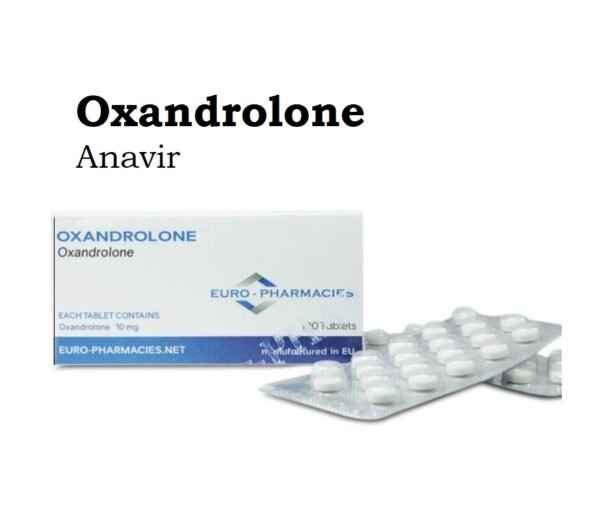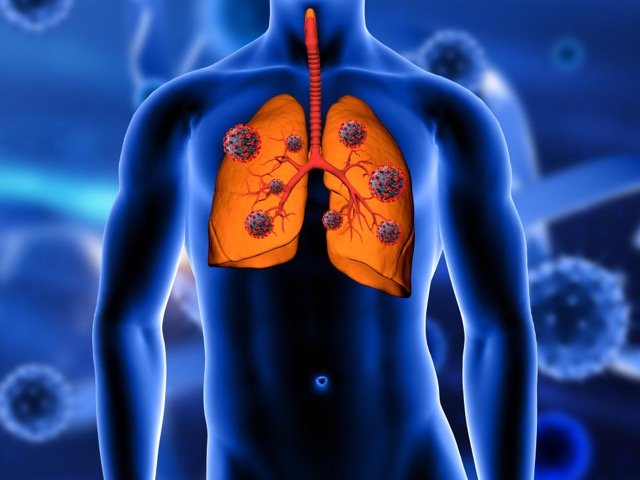Oxandrolone (Oxandrin, Anavir) is a synthetic anabolic steroid that is used in the for weight gain and muscle mass in emaciated patients. It also promotes wound healing in patients with severe burns.
Oxandrolone Uses:
-
Weight gain (adjunctive therapy):
- To promote weight gain after weight loss following extensive surgery, chronic infections, or severe trauma, and in some patients who, without definite pathophysiologic reasons, fail to gain or to maintain a normal weight, start Adjunctive therapy.
-
Other indications included in manufacturer labeling:
- Adjunctive therapy to offset protein catabolism with prolonged corticosteroid administration.
- Relief of bone pain associated with osteoporosis (current guidelines do not make recommendations regarding use of oxandrolone for osteoporosis-related bone pain)
-
Off Label Use of Oxandrolone in Adults:
- Severe Burns (adjunctive therapy)
Oxandrolone Dose in Adults
Oxandrolone Dose in the treatment of severe burns (off-label):
-
P/O, Enteral feeding tube:
- 10 mg every 12 hours starting ~5 days after injury.
Weight gain (adjunctive therapy ):
- P/O:
- Based on individual response, 2.5-20 milligram in divided doses 2-4 times a day.
- A course of therapy of 2-4 weeks is usually adequate.
- May repeat intermittently as required.
Oxandrolone Dose in Childrens
Oxandrolone dose in the treatment of severe burn management; to increase lean muscle mass and promote wound healing:
-
Children and Adolescents:
- P/O:
- 0.1 mg/kg/dose twice a day for up to 12 months has been shown to increase lean body mass, bone mineral density, and muscle strength.
- Shortened length of ICU stay and improved donor site wound healing was also observed.
- Benefits have been shown to persist for up to 5 years post-burn.
Oxandrolone dose in the treatment of Constitutional delay of growth and puberty (CDGP) in males:
-
Children and Adolescents 9 to 16 years:
- P/O:
- 1.25-2.5 mg once a day in the evening.
- Normal duration: 3-12 months although longer (~5 years) has been reported.
Oxandrolone Dose in the treatment of Turner Syndrome:
-
Children and Adolescents less than 8 years:
- P/O:
- Reported range:
- 0.03-0.06 mg/kg/day at bedtime in combination with growth hormone & estrogen.
- Max single dose:
- 2.5 milligram per dose.
- Due to risks of dose-related virilization, doses ≥0.05 mg/kg/day should generally be avoided.
- Typically, therapy initiated at 8-9 years of age and continued until goal height attained or further growth is unlikely (eg, bone age ≥14 years and growth velocity <2 cm/year).
Oxandrolone for Weight gain (an adjunct to diet and other therapies):
-
Children and Adolescents:
- P/O:
- Total daily dose:
- ≤0.1 mg/kg.
- May be repeated intermittently as required.
- The daily dose is divided 2 to 4 times daily in adult patients.
- Typical therapy duration: 2-4 weeks.
Pregnancy Risk Factor X
- Pregnant women should not use this product.
- Reports have been made about the maculinization and mutilation of the fetus.
Oxandrolone use during breastfeeding:
- It is unknown if oxandrolone secretes in breast milk.
- Due to the possibility of serious adverse reactions in nursing infants, breastfeeding is not recommended.
Oxandrolone Dose in Kidney Disease:
- In the manufacturer’s labeling, there are no dosage adjustments provided.
- Due to the propensity to cause edema, use cautiously.
Oxandrolone Dose in Liver Disease:
-
Preexisting impairment:
- In the manufacturer’s labeling, there are no dosage adjustments provided.
- use cautiously.
-
Hepatotoxicity during therapy:
- If abnormal liver function tests or cholestatic hepatitis with jaundice occurs, discontinue use.
Side effects of Oxandrolone:
-
Cardiovascular:
- Edema
-
Central Nervous System:
- Deepening Of The Voice (Females)
- Depression
- Excitement
- Habituation
- Insomnia
-
Dermatologic:
- Acne Vulgaris (Females And Prepubertal Males)
- Androgenetic Alopecia (Females)
-
Endocrine & Metabolic:
- Changes In Libido
- Decreased Glucose Tolerance
- Decreased HDL Cholesterol
- Electrolyte Disturbance
- Gynecomastia
- Hirsutism (Females)
- Increased LDL Cholesterol
- Inhibition Of Gonadotropin Secretion
- Menstrual Disease (Females)
-
Genitourinary:
- Clitoromegaly (Females)
- Epididymitis (Postpubertal Males)
- Erectile Dysfunction (Prepubertal Males; Increased Or Persistent Erections)
- Impotence (Postpubertal Males)
- Inhibition Of Testicular Function (Postpubertal Males)
- Irritable Bladder (Postpubertal Males)
- Oligospermia (Postpubertal Males)
- Phallic Enlargement (Prepubertal Males)
- Priapism (Chronic; Postpubertal Males)
- Testicular Atrophy (Postpubertal Males)
-
Hematologic & Oncologic:
- Clotting Factors Suppression
- Prolonged Prothrombin Time
-
Hepatic:
- Cholestatic Jaundice
- Hepatocellular Neoplasm
- Increased Serum Alkaline Phosphatase
- Increased Serum ALT
- Increased Serum AST
- Increased Serum Bilirubin
- Peliosis Hepatitis (Longterm Therapy)
-
Neuromuscular & Skeletal:
- Increased Creatine Phosphokinase
- Premature Epiphyseal Closure (Children)
-
Renal:
- Increased Creatinine Clearance
Contraindications to Oxandrolone:
- Nephrosis.
- Females with hypercalcemia are at greater risk of developing breast cancer.
- Men with suspected or confirmed prostate cancer or breast cancer.
- Hypercalcemia.
- Pregnancy
Warnings and precautions
-
Blood lipid changes: [US Boxed Warning]
- Could cause blood lipid changes and increase the risk of developing arteriosclerosis.
- Patients at high risk of, or who have a history of, cardiovascular disease should be cautious.
- As directed, review your lipid profile and adjust your therapy.
- Lipid changes can usually be reversed after discontinuation of therapy.
-
Gynecomastia
- May cause gynecomastia.
-
Hepatic effects: [US Boxed Warning]
- Anabolic steroids can cause liver cell tumors, peliosis liveritis or liver failure.
- This may not become apparent until intra-abdominal hemorhage or liver failure occurs.
- Stop taking medication if you have cholestatic liver disease with jaundice, abnormal liver function tests or cholestatic hepatitis.
- Drug-induced jaundice can be reversed after discontinuation.
- Use caution in patients with hepatic impairment.
-
Oligospermia:
- May inhibit spermatogenesis.
- Oligospermia may occur.
-
Polycythemia
- High doses anabolic steroids can cause increased hemoglobin or hematocrit.
-
Priapism
- Excessive sexual stimulation or priapism may be a possibility.
-
Breast cancer
- Use caution when treating breast cancer patients.
- Hypercalcemia can be caused by stimulating osteolysis
- Contraindicated in females with hypercalcemia and breast cancer.
- If hypercalcemia occurs, discontinue use.
- Men with breast cancer are not advised to use this medication.
-
Carbohydrate intolerance:
- Could have negative effects on glucose tolerance
- Patients with diabetes should be cautious.
-
COPD:
- Patients with COPD should be cautious.
-
Conditions that are edematous:
- Patients with edema (eg., cardiovascular disease, migraines, seizure disorder) should be cautious.
- May cause fluid retention.
|
Ajmaline |
Androgens may enhance the adverse/toxic effect of Ajmaline. Specifically, the risk for cholestasis may be increased. |
|
Blood Glucose Lowering Agents |
Androgens may enhance the hypoglycemic effect of Blood Glucose Lowering Agents. |
|
C1 inhibitors |
Androgens may enhance the thrombogenic effect of C1 inhibitors. |
|
Corticosteroids (Systemic) |
May enhance the fluid-retaining effect of Androgens. |
|
CycloSPORINE (Systemic) |
Androgens may enhance the hepatotoxic effect of CycloSPORINE (Systemic). Androgens may increase the serum concentration of CycloSPORINE (Systemic). |
|
Vitamin K Antagonists (eg, warfarin) |
Androgens may enhance the anticoagulant effect of Vitamin K Antagonists. |
Monitoring Parameters:
- Liver function tests
- cholesterol profile
- hemoglobin/hematocrit.
- INR/PT in patients on anticoagulant therapy
Children:
- Radiographs of left wrist and hand every 6 months (to assess bone maturation)
Adult females:
- Signs of virilization (deepening voice, hirsutism, acne, clitoromegaly).
- Urine & serum calcium in women with breast cancer
How to administer Oxandrolone?
Enteral feeding tube (off-label):
- In severe burn patients unable to tolerate oral administration, may dissolve oxandrolone tablets in ethanol and administer through an enteral feeding tube.
Mechanism of action of Oxandrolone:
- Synthetic testosterone derivative with similar androgenic and anabolic actions
Absorption:
- Well absorbed when taken orally
Protein binding:
- 95 percent
Half-life elimination:
- 10-13 hours
Time to peak serum concentration:
- ~1 hour
Excretion:
- Urine (28 percent as unchanged drug).
International Brands of Oxandrolone:
- Oxandrin
- Kicker
- Xtendrol
Oxandrolone Brand Names in Pakistan:
No Brands Available in Pakistan.







